What do the runes mean in Midsommar?
The creepiest movie of the summer is chock full of ancient symbols. Here's what they mean.

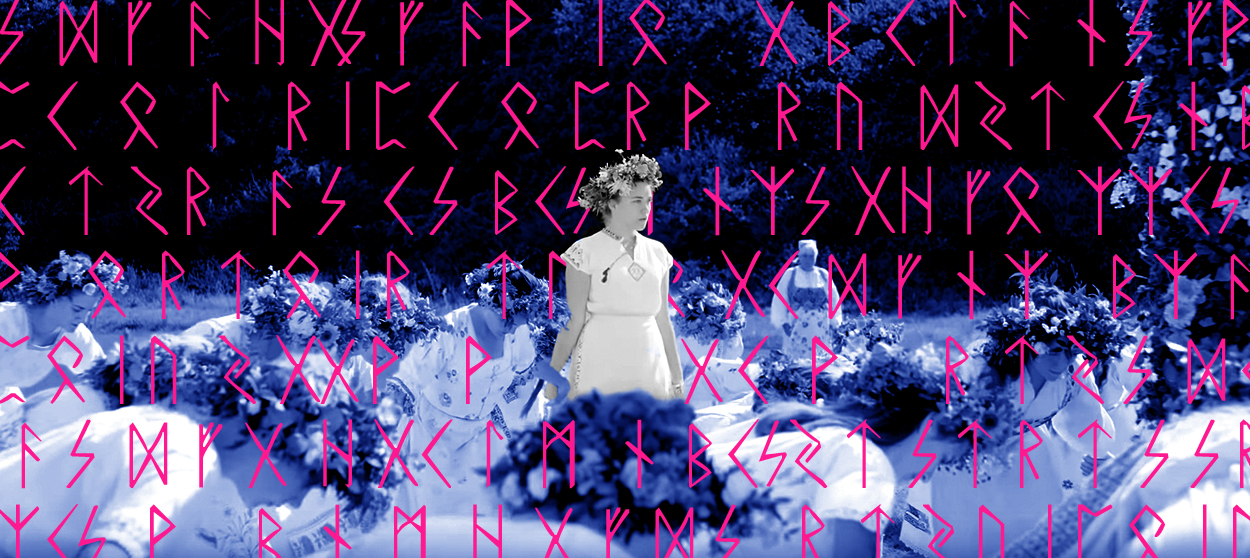
After watching the new horror movie Midsommar, you might promise yourself three things: That you will never go to Sweden; that you'll always remember your partner's birthday; and that you'll dedicate yourself to the study of ancient runes — you know, just in case.
Regarding the latter, here is The Week's guide to the runes in this summer's creepiest horror movie.
First of all, what are runes?
The Week
Escape your echo chamber. Get the facts behind the news, plus analysis from multiple perspectives.

Sign up for The Week's Free Newsletters
From our morning news briefing to a weekly Good News Newsletter, get the best of The Week delivered directly to your inbox.
From our morning news briefing to a weekly Good News Newsletter, get the best of The Week delivered directly to your inbox.
Runes are an alphabet that was used in Northern Europe before the eventual adoption of the Latin alphabet. Each rune has both a name and a sound, as well as a given meaning. "ᚢ," for example, is the Ur rune meaning "ox," or "water."
Because of their imbued meanings, runes are sometimes used to try to read the future. "Today, the best-known application of rune lore is divination," writes Diana L. Paxson in the introduction to Taking Up the Runes: A Complete Guide to Using Ruins in Spells, Rituals, Divination, and Magic. "Chips or stones marked with the runes are drawn, cast, or laid out in patterns like tarot cards." In the casting of runes, "ᚢ" might refer instead to the concept of strength of will or body, for example.
Midsommar director Ari Aster and his team clearly wanted to use certain runic symbols as foreshadowing or to give certain scenes in the movie a deeper, secretive meaning. Here are some of the major runes you see in the film.
Tiwaz rune
A free daily email with the biggest news stories of the day – and the best features from TheWeek.com
Looks like: ᛏ

Dani's clueless boyfriend Christian is given Swedish folk clothes bearing the embroidered symbol "ᛏ," or Tiwaz. Aster's use of the symbol here is pretty on the nose; Tiwaz is associated with the god Týr, and also with masculine power and energy. Seeing as Christian dons the outfit right before a sex ritual, the evocation of male energy is appropriate.
In Lisa Chamberlain's Runes for Beginners: A Guide to Reading Runes in Divination, Rune Magic, and the Meaning of the Elder Futhark Runes, the appearance of the rune Tiwaz is said to additionally "[speak] of the need to put our causes above our personal desires if the greater good requires it." Since the hesitant Christian goes on to serve an, ahem, reproductive purpose for the cult, that also seems to be a fitting interpretation here. Note also that Christian's Tiwaz is surrounded by tiny versions of Algiz (ᛉ) — more on that rune in a bit.
Peorð
Looks like: ᛈ
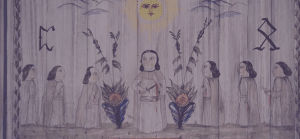
(Midsommar | A24)
The symbol on the left-hand side of this large panel in the Swedes' boarding house is "Peorð," the appearance of which portends "uncertain meaning, a secret matter, initiation," as Ralph H. Blum writes in The Book of Runes: A Compass for Navigating in Turbulent Times. Another popular online guide for rune binding likewise associates this rune with "mystery" and "hidden things." Although we never see the exact ritual portrayed in this image during the course of Midsommar, the appearance of "Peorð" hints at the shrouded and sinister intentions of the cult Dani and her friends have found themselves in the midst of.
Note also that on the right-hand side of the panel is the helical rune "odal."
Odal
Looks like: ᛟ

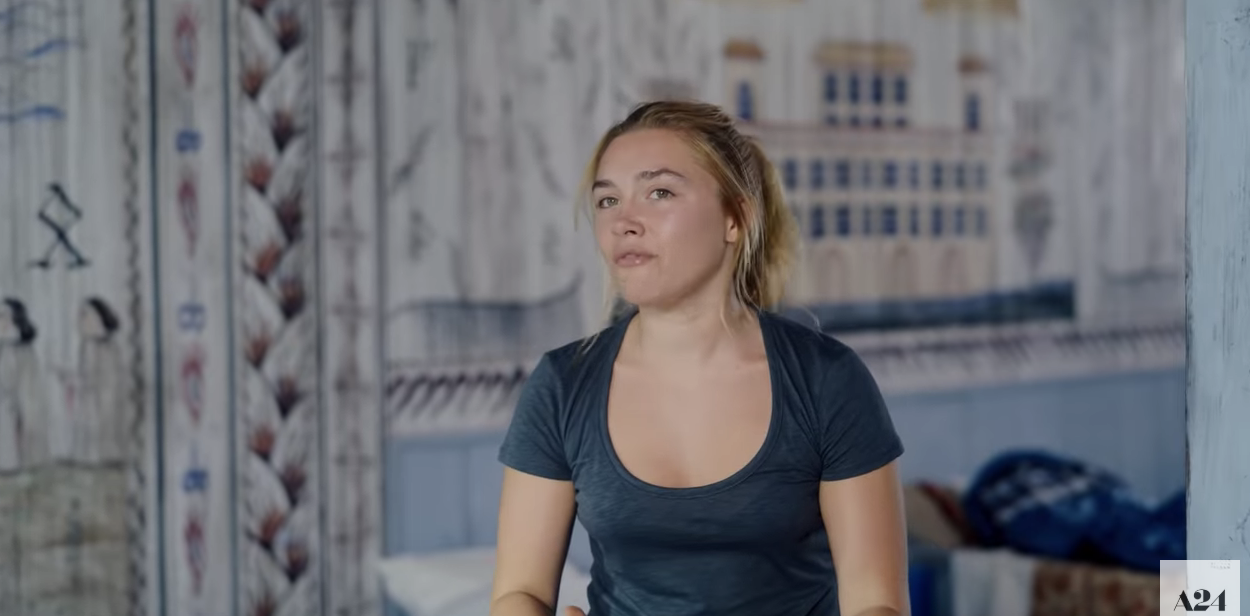
Odal (also sometimes called Othala) is the most common rune you see in Midsommar due to its association with familial groups and inheritance. Aster uses Odal to refer to the evil traditions passed down for hundreds of years among the Swedish cultists in the name of protecting their family. The rune appears on many of the panels in the Swedes' boarding house as well as in their arrangement of the dining table.
Chamberlain adds in her guide that Odal "may refer to literal inheritance of land or other property, but it is often about the intangible things we 'inherit' from our family of origin, for better or worse." In this case, of course, that would be for the worse.
Ansuz
Looks like: ᚨ
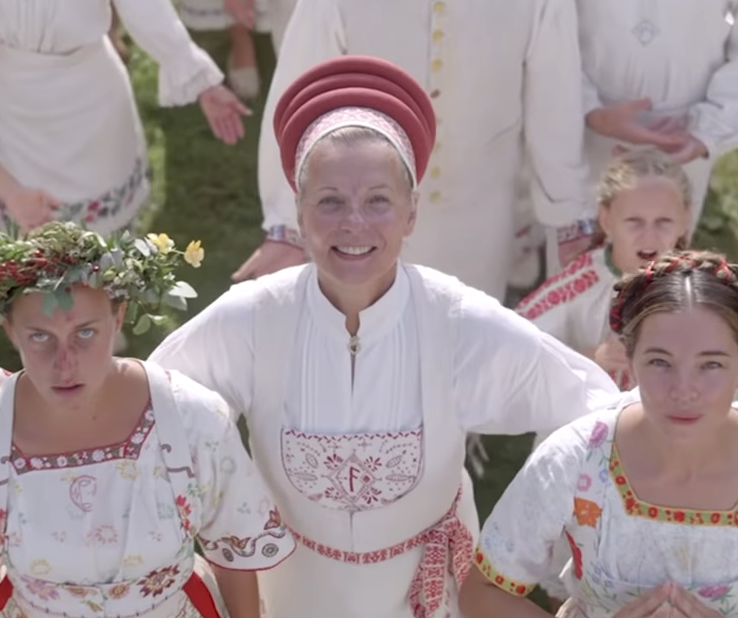
Siv (Gunnel Fred) is the matriarch and officiant of the Swedish cult, and she in turn wears the rune "Ansuz" embroidered on her dress. This rune is associated with leadership, divine power, and wisdom, indicating Siv's status in the clan.
Inguz and Gebo
Look like: ᛜ and ᚷ
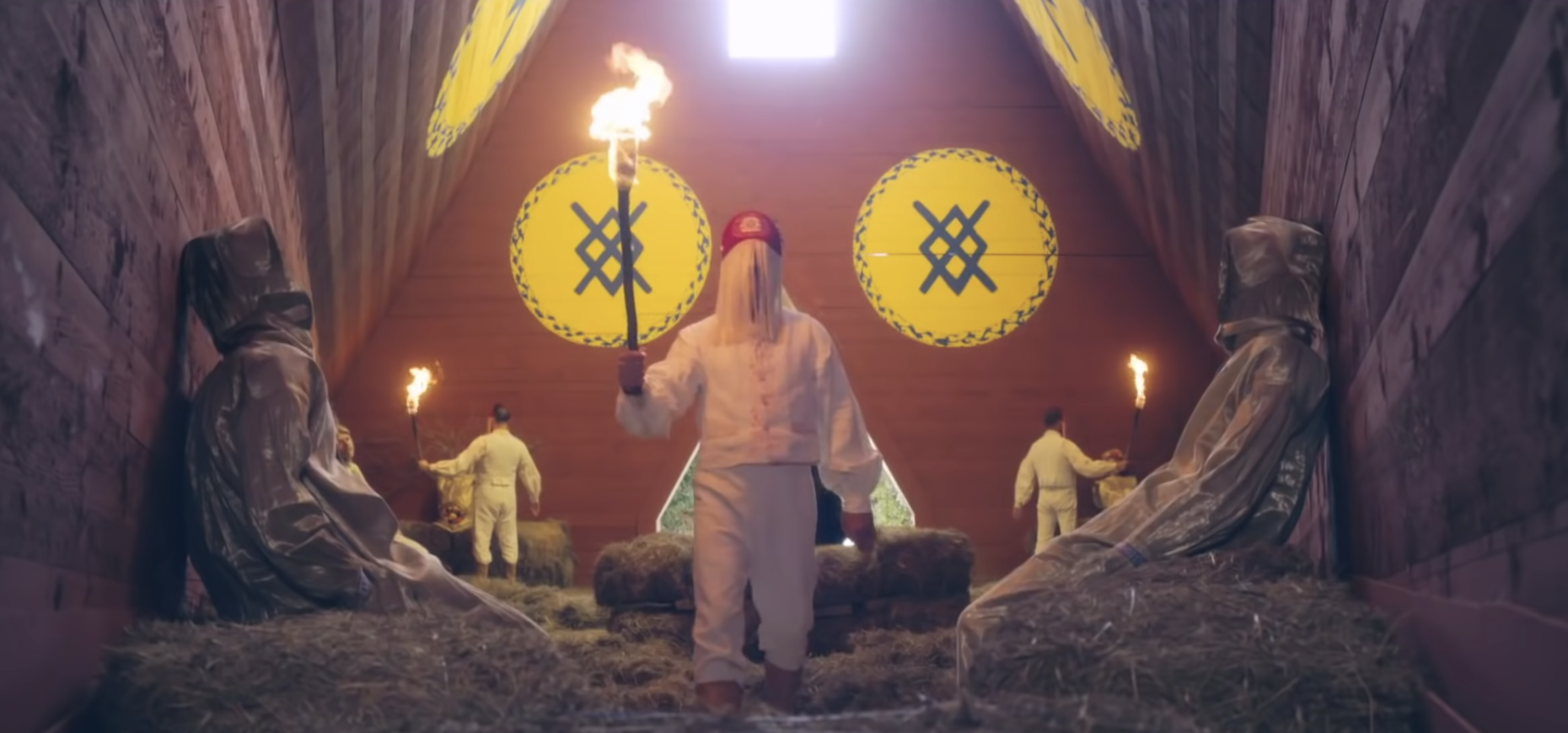
When runes are woven together into a single image they are said to be "bound" (see the Bluetooth symbol as one example you already likely know). While there are no runes in the Elder or Younger Futhark alphabets that look like the ones on the yellow panels above, there are individual runes "ᛜ" and "ᚷ." Here they seem to be locked together, communicating a shared meaning.
Inguz (ᛜ) is a fertility symbol — befitting of a sex cult — with Chamberlain writing that it suggests "the springtime energy of plant life emerging after the depths of winter, and the procreation of all life on Earth." Since the temple the symbol is painted on is about to be burned down as a means of extreme and especially morbid fertilization, its appearance here makes sense.
The rune Gebo (ᚷ), meanwhile, is strongly associated with gifts and generosity. Presumably that sentiment here refers to the sacrifice of the living and dead tributes locked within the temple, who are about to give their bodies back to the Earth so the cult can continue to grow food and prosper.
Algiz
Looks like: ᛉ

The runestone worshipped by an elderly couple before their gruesome suicide is another example of a bound rune, containing the aforementioned symbols ᚷ ("gift," presumably used here in the context of physical sacrifice) and ᛈ ("a secret ritual"). In the middle of the stone is the Raido rune, which will be discussed below, while on the top is the forked rune Algiz, but shown in reverse, with the prongs pointing down.
In some divination practices, a reversed rune (called a "merkstave") means the opposite, or negative version, of a rune's regular interpretation. While a right-side-up Algiz suggests protection from evil and danger, the opposite idea — a welcoming of evil, perhaps? — is being proposed here.
Raido and Dagaz
Look like: ᚱ and ᛞ
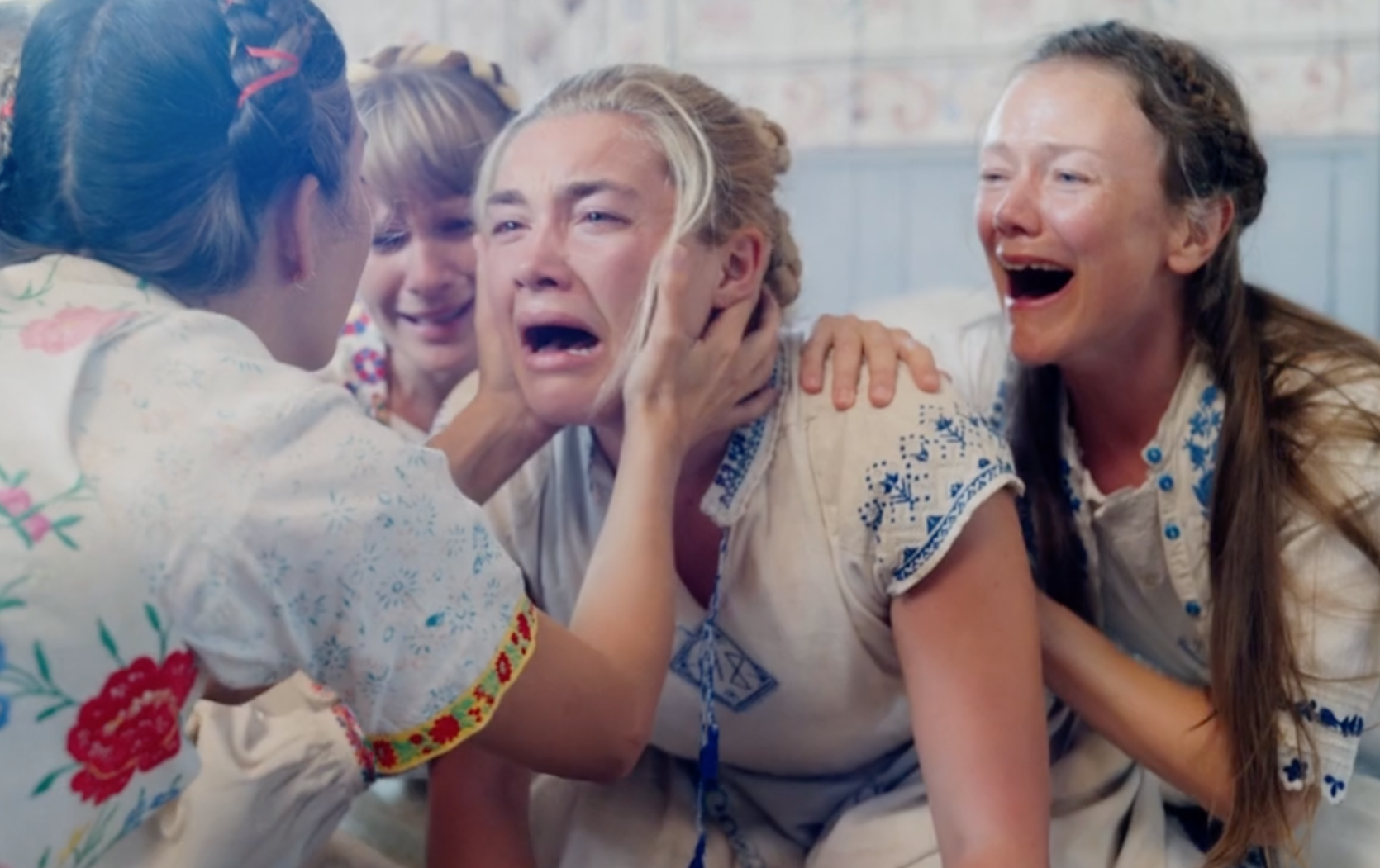
When Dani is eventually given a traditional dress of her own, it bears two likewise inverted runes: "Raido" and "Dagaz."
Raido (ᚱ) is used in its regular form to mean travel, journey, or reunion. In its inverse, it suggests "crisis" or "death." But as is the case with reading runes more generally, what it means for Dani's journey is up to your personal interpretation. As Chamberlain points out in her guide, a reverse Raido can mean "[y]ou may be merely being 'rerouted' on your journey, to ultimately end up with an even better outcome than hoped for."
Dagaz (ᛞ) normally means an awakening, dawn, or a new beginning, and "most interpretations of this rune are positive," writes Paxson. Because of the symmetry of Dagaz, some guides say the rune does not have an inverse meaning, while others claim that drawing the rune turned on its side — the way it is embroidered on Dani's dress — means something like "hopelessness."
So even though he uses the runes to add another layer of meaning to Midsommar, Aster still doesn't outright tell us how to understand the film's conclusion. The runic symbols remain ambiguous — is this a good journey for Dani, or a bad one? Is there a light at the end of the tunnel, or is it winking out? Has she found a new family, or lost herself?
On this topic, not even the stones will say.
Jeva Lange was the executive editor at TheWeek.com. She formerly served as The Week's deputy editor and culture critic. She is also a contributor to Screen Slate, and her writing has appeared in The New York Daily News, The Awl, Vice, and Gothamist, among other publications. Jeva lives in New York City. Follow her on Twitter.
-
 Walter Isaacson's 'Elon Musk' can 'scarcely contain its subject'
Walter Isaacson's 'Elon Musk' can 'scarcely contain its subject'The latest biography on the elusive tech mogul is causing a stir among critics
-
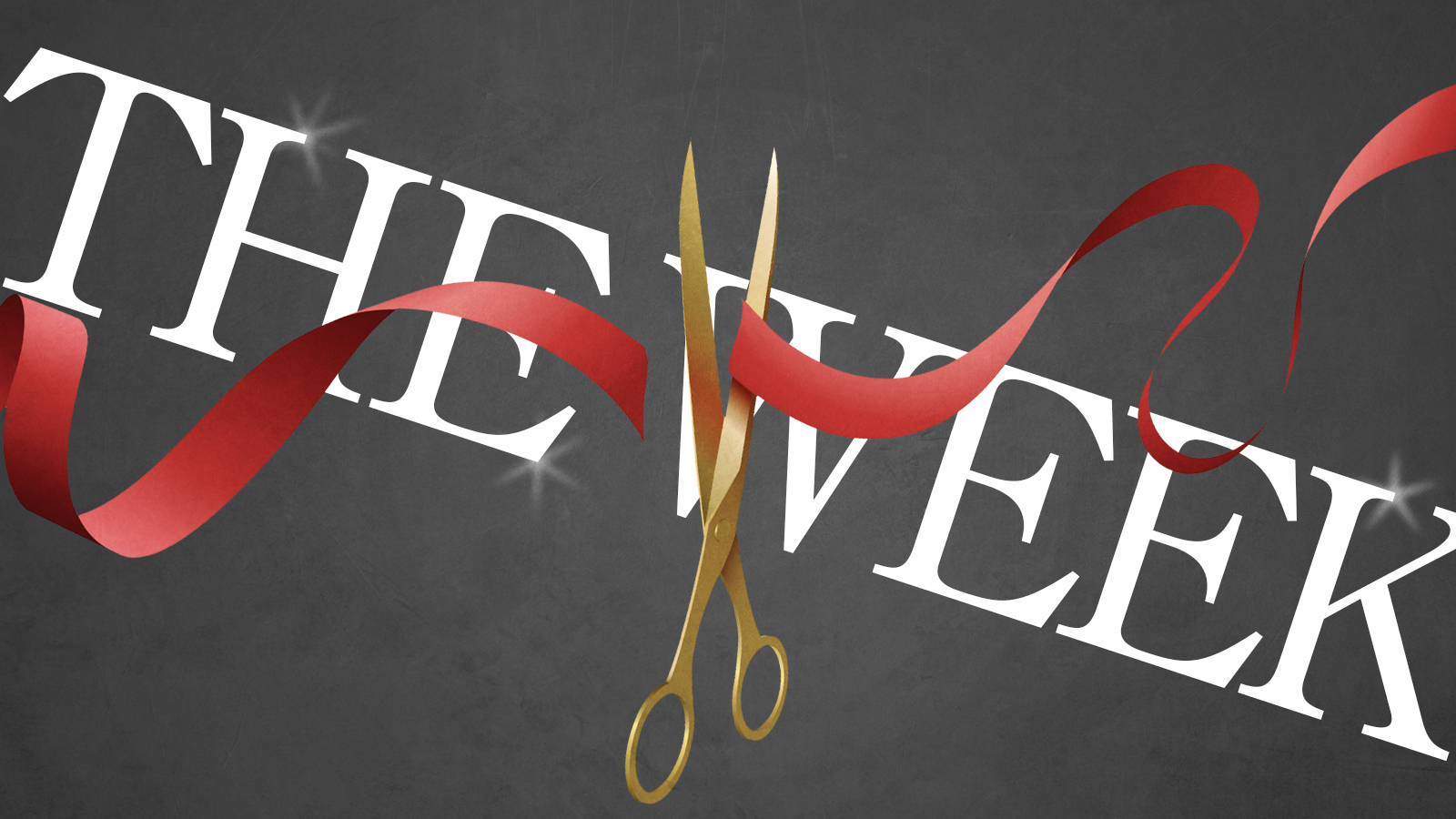 Welcome to the new TheWeek.com!
Welcome to the new TheWeek.com!The Explainer Please allow us to reintroduce ourselves
-
 The Oscars finale was a heartless disaster
The Oscars finale was a heartless disasterThe Explainer A calculated attempt at emotional manipulation goes very wrong
-
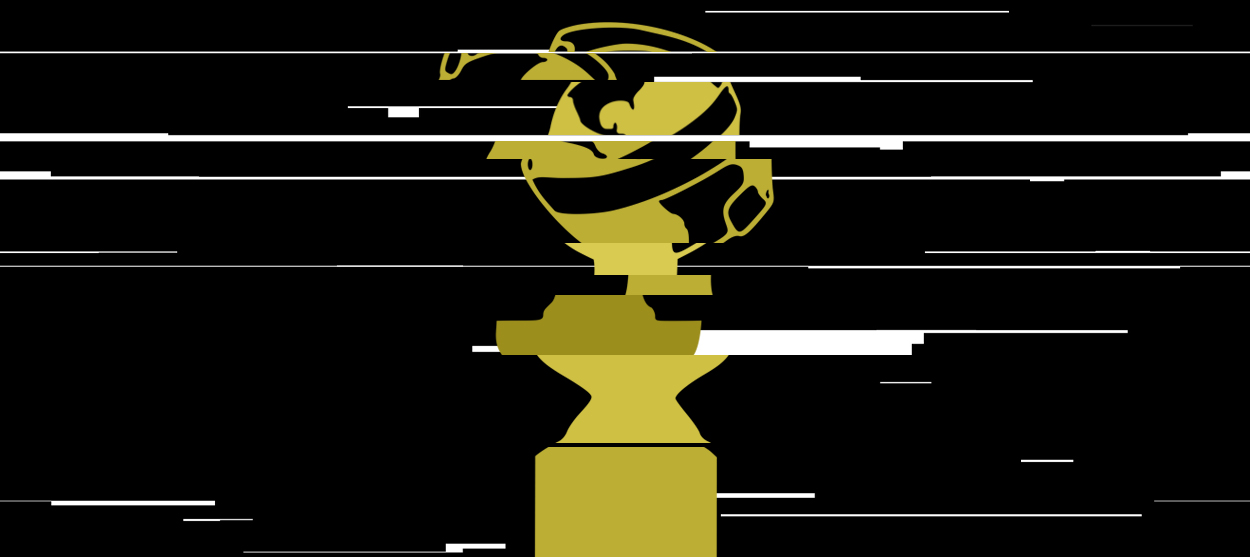 Most awkward awards show ever?
Most awkward awards show ever?The Explainer The best, worst, and most shocking moments from a chaotic Golden Globes
-
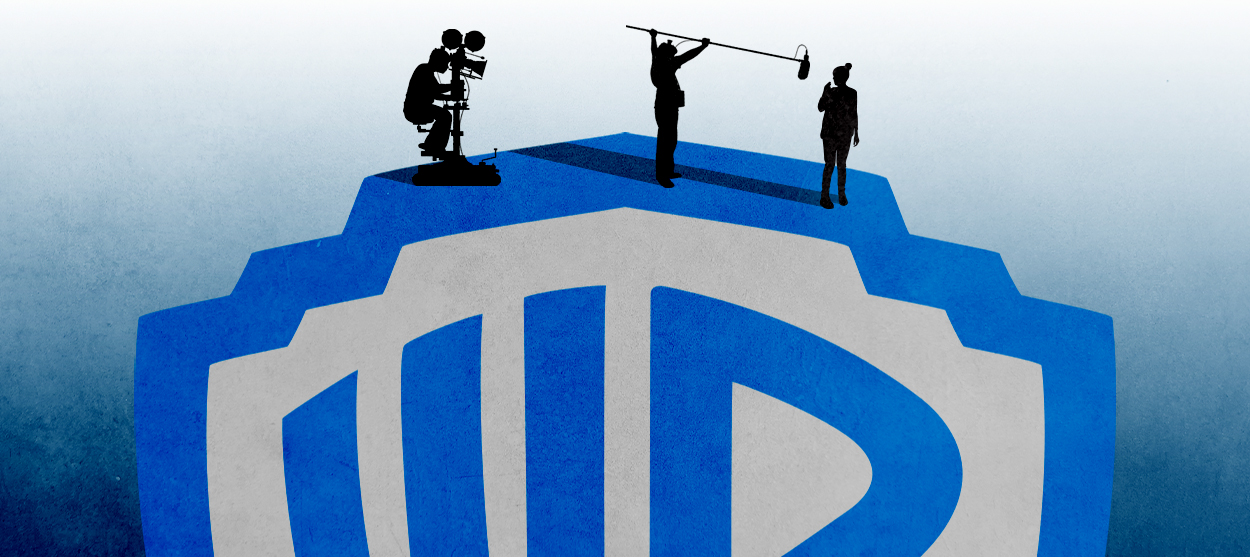 The possible silver lining to the Warner Bros. deal
The possible silver lining to the Warner Bros. dealThe Explainer Could what's terrible for theaters be good for creators?
-
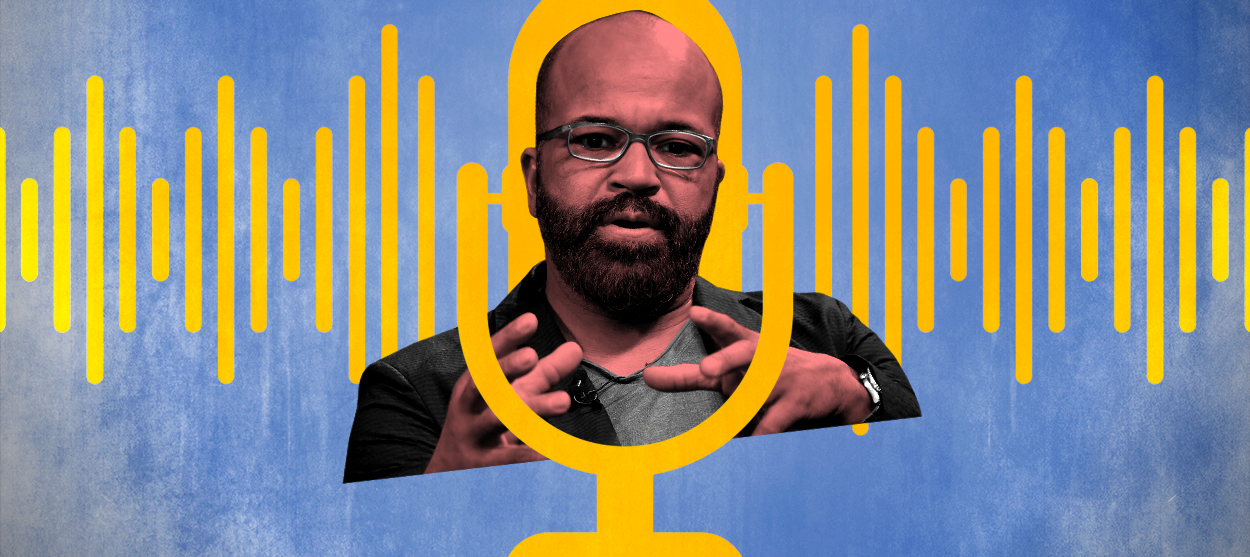 Jeffrey Wright is the new 'narrator voice'
Jeffrey Wright is the new 'narrator voice'The Explainer Move over, Sam Elliott and Morgan Freeman
-
 This week's literary events are the biggest award shows of 2020
This week's literary events are the biggest award shows of 2020feature So long, Oscar. Hello, Booker.
-
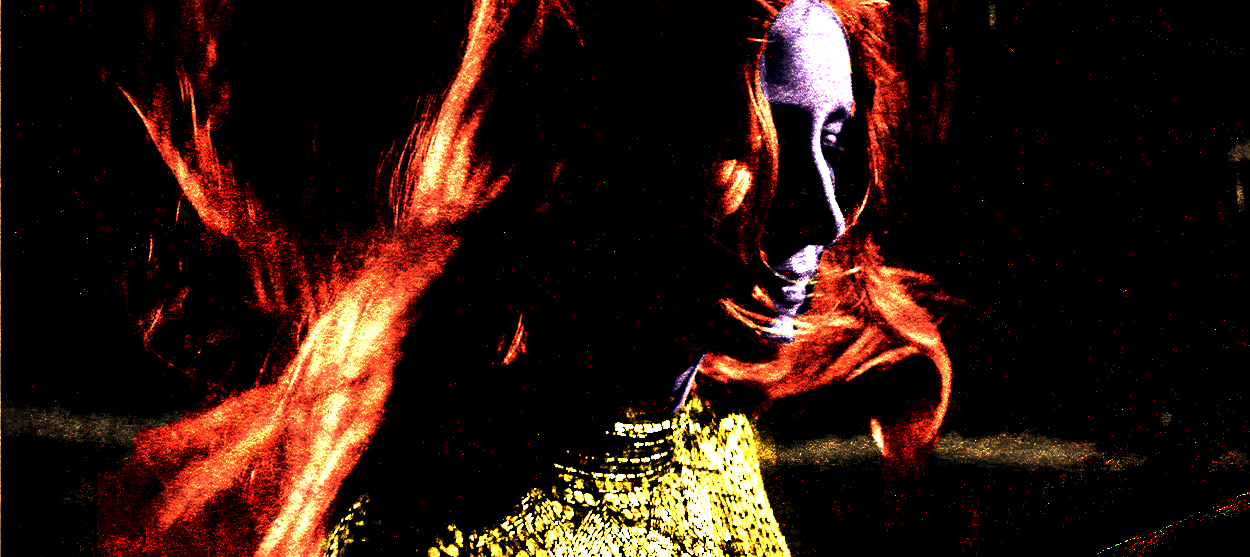 What She Dies Tomorrow can teach us about our unshakable obsession with mortality
What She Dies Tomorrow can teach us about our unshakable obsession with mortalityThe Explainer This film isn't about the pandemic. But it can help viewers confront their fears about death.



